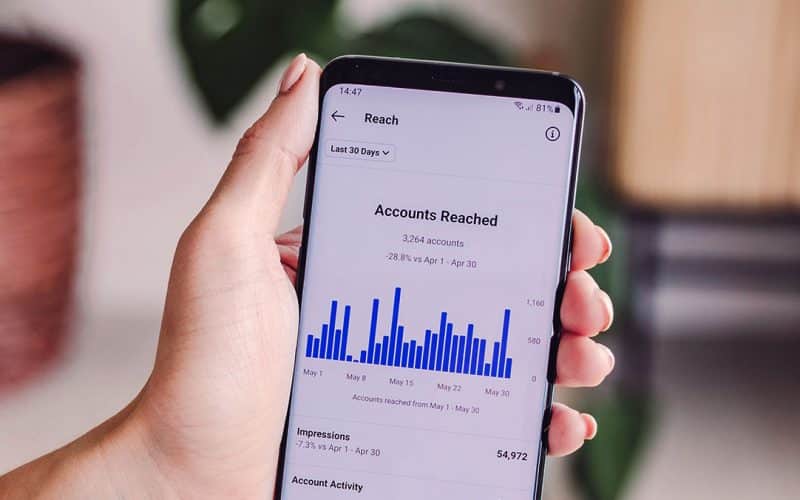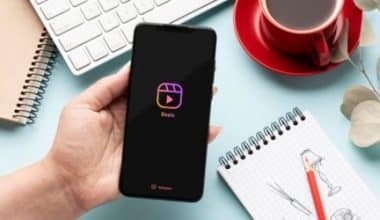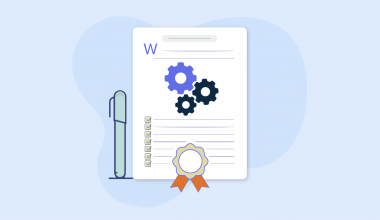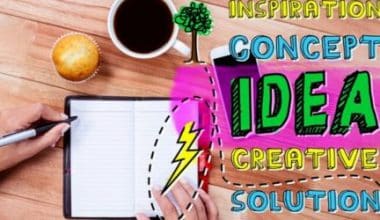When I first started researching audience behavior, I was astounded at how little adjustments could result in large disparities in conversion rates. Understanding and applying these concepts was like discovering a secret gem. In this article, I’ll present seven great audience behavior hacks that can increase your conversions overnight by utilizing strategies that many marketers neglect. Whether you’re a seasoned expert or just getting started, these strategies can help you leverage the power of audience behavior to develop your business.
Understanding Audience Behavior
Understanding audience behavior is critical for every organization seeking success in today’s competitive market. It entails studying how your customers engage with your brand, what influences their purchasing decisions, and how you can use these insights to develop more effective marketing strategies. Businesses that focus on behavioral clues and data-driven approaches can create ads that touch profoundly with their target audience and produce better engagement and conversions.
Why Does Audience Behavior Matter?
Audience behavior offers significant insights about your customers’ preferences, demands, and motivations. Understanding these variables allows organizations to customize their marketing efforts to better match the needs of their target audience. This leads to more targeted and successful marketing strategies, which increase client happiness and loyalty.
Key Elements of Audience Behavior
Understanding the complexities of audience behavior can feel like putting together a complicated jigsaw, but once you understand the important components, you can paint a clear picture that can propel your marketing strategies forward. Let’s look at the key characteristics of audience behavior that can make or ruin your advertisements.
#1. Demographics
Think of demographics as the fundamental building blocks of your target audience profile. This includes age, gender, income, education level, and location. These details may appear simple, yet they provide significant insight into who your consumers are. By segmenting your audience based on demographics, you can create more effective marketing messages. For example, a millennial campaign would highlight digital innovation and sustainability, whereas a baby boomer campaign might promote dependability and quality.
#2. Psychographics
If demographics are the “who” of your target audience, psychographics are the “why.” This deeper layer delves into their interests, values, attitudes, and lifestyle. By delving into psychographics, you may discover what genuinely inspires your target audience and generate marketing messages that resonate emotionally. For example, if your brand represents eco-friendly principles, knowing that your target audience prioritizes sustainability can help you create appealing stories about your environmental endeavors.
#3. Behavioral data
Behavioral data is a goldmine for audience insights. This data monitors how your target audience interacts with your business through numerous touchpoints, such as purchase history, website activity, and social media involvement. By examining these behaviors, you can find patterns and trends that will help you plan your marketing strategies. For example, if you notice an increase in interaction after posting user-generated material, you may opt to include more of this type of content in your marketing mix.
Understanding these essential features of audience behavior enables you to develop a more focused and effective marketing approach. It’s like having a roadmap to help you send the right message to the right people at the right time. So, how can you use this information to improve your marketing efforts? Let us break it down.
Strategies to Leverage Audience Behavior
Understanding your audience is only the first step; the real magic occurs when you use these insights to develop effective marketing strategies. Let’s look at some great techniques to leverage audience behavior for maximum impact.
#1. Personalization
Have you ever received a marketing email that felt like it was crafted specifically for you? That is the power of personalization. You may create a more engaging and relevant experience by personalizing your communications and product offerings to each customer’s specific requirements and interests. According to an Epsilon study, 80% of customers are more inclined to make a purchase when brands provide individualized experiences. Using audience behavior data, you can tailor everything from email content to product recommendations, making each contact feel unique and personalized.
#2. Segmentation
Customers are not all the same, so why should your marketing messages be? Segmentation is the process of splitting your target audience into distinct groups based on common qualities or behaviors. This enables you to design targeted messages that speak more profoundly to each demographic. Consider segmenting your audience based on demographics, buying history, or engagement levels. Tailoring your messaging to these unique audiences ensures that your material is relevant and appealing, which leads to more engagement and conversions.
#3. Predictive Analysis
Wouldn’t it be amazing to know what your consumers plan to do before they do it? Predictive analytics makes this possible. You can forecast future client behavior by examining previous data and applying machine learning algorithms. This implies you may anticipate customer requirements and preferences, resulting in more proactive and effective marketing strategies. For example, if predictive analytics indicates that a customer is likely to repurchase a product, you may send them a timely reminder or offer before they even consider it.
#4. Behavioral Triggers
Behavioral triggers are about capturing those critical moments when customers are most inclined to behave. This entails employing specified actions or behaviors to initiate tailored marketing communications. For example, if a consumer abandons their shopping cart, send them a follow-up email with a unique offer to persuade them to finish their purchase. Behavioral triggers greatly boost the likelihood of conversion by engaging with clients at the correct moment with the right message.
Step-by-Step Guide to Implementing Audience Behavior Hacks
Understanding and utilizing audience behavior can significantly improve your marketing efforts and increase conversion rates. Here’s a step-by-step guide to deploying successful audience behavior hacks.
Hack #1: Use Social Proof
Social proof capitalizes on the human instinct to seek others for guidance on how to behave, particularly in ambiguous situations. Displaying customer testimonials, reviews, and user-generated content can boost your brand’s credibility and persuade potential customers to trust and purchase your products or services.
Example: When we included customer reviews on our product pages, conversions increased by 25% within the first month. According to a Nielsen survey, 92% of customers believe recommendations from friends and family more than other forms of advertising, demonstrating the strength of social proof.
Hack #2: Use Scarcity and Urgency
Creating a sense of scarcity and urgency might encourage clients to make speedy purchasing decisions. Limited-time offers, countdown timers and stock level indications operate as a psychological trigger, prompting rapid action.
Example: Implementing a flash sale with a countdown timer on our homepage doubled sales in just 24 hours. According to research published in the Journal of Consumer Research, scarcity can dramatically raise an item’s perceived value and appeal.
Hack #3: Personalized Messaging
Personalization is the process of adapting your content, product recommendations, and email marketing to your consumers’ individual behaviors and preferences. This level of customization can significantly increase engagement and conversion rates.
For example, personalized email campaigns increased our open rate by 29% and click-through rate by 41%. According to Epsilon, 80% of consumers are more likely to buy from a brand that provides tailored experiences, demonstrating the value of personalization.
Hack #4: Simplify Your Checkout Process
A lengthy checkout process is a significant barrier to conversions. Simplifying the steps, providing numerous payment alternatives, and reducing the amount of form fields can all help to lower cart abandonment rates.
Example: By reducing our checkout process from five to three stages, we decreased cart abandonment by 15%. According to the Baymard Institute, 18% of US online customers abandon their carts because the checkout procedure is too long and confusing, emphasizing the importance of simplicity.
Hack #5: Optimize for Mobile
With mobile usage on the rise, making your website mobile-friendly is critical. A responsive design, fast load speeds, and easy navigation are essential for offering a smooth mobile user experience.
Example: When we optimized our website for mobile, we saw a 30% boost in mobile conversions. According to Statista, mobile devices accounted for 54.8% of global website traffic in the first quarter of 2021, highlighting the importance of mobile optimization.
Hack #6: Use Retargeting
Retargeting is the process of presenting advertising to users who have previously visited your website but did not make a purchase. This maintains your brand in front of their minds and encourages them to return and complete their transaction.
Example: Our retargeting campaigns had a 70% greater conversion rate than ordinary display advertisements. According to Criteo, retargeted website visitors are 43% more likely to convert, demonstrating the efficacy of this strategy.
Hack #7: A/B test everything
A/B testing compares two versions of a webpage, email, or ad to see which one performs better. Testing various aspects such as headlines, graphics, call-to-actions, and layouts can assist you in optimizing your marketing efforts for optimal effectiveness.
Example: Implementing A/B testing on our landing pages resulted in a 20% boost in conversions. According to HubSpot, A/B testing can increase company leads by up to 40%, making it an important tool for ongoing improvement.
Examples of Effective Audience Behavior Strategies
Implementing strategies that successfully exploit audience behavior can result in outstanding achievement. Here are two example cases:
#1. Amazon
Amazon excels at using audience behavior data to create highly tailored purchasing experiences. They may offer products that meet individual customers’ interests and requirements by methodically studying their purchase history, browsing habits, and even abandoned carts. This tailored strategy not only improves the shopping experience but also results in increased sales and client loyalty.
Amazon’s recommendation engine is credited with driving 35% of the company’s sales. This demonstrates the importance of customization in driving consumer happiness and repeat business. Amazon keeps its customers engaged and coming back for more by personalizing product recommendations to their particular preferences.
#2. Netflix
Netflix has transformed the way we consume media by utilizing predictive analytics to recommend series and movies. They may recommend content to viewers based on their viewing histories, tastes, and even how much time they spend watching specific genres. This personalized recommendation system keeps users interested and reduces churn.
Netflix’s recommendation engine accounts for 80% of the content seen on the platform. This high degree of engagement stems directly from the company’s capacity to study and forecast audience behavior, ensuring that customers always have something fascinating to watch.
These examples show how properly understanding and harnessing audience behavior can improve customer experiences, increase engagement, and drive considerable business growth. Businesses that use comparable strategies can better meet their customers’ requirements and achieve greater success.
Key takeaways
- Social proof can greatly increase credibility and impact purchasing decisions.
- Creating scarcity and urgency motivates customers to act quickly.
- Personalized messaging improves engagement and conversion rates.
- Simplifying the checkout procedure lowers cart abandonment.
- Mobile optimization is critical for enhancing the user experience and conversions.
Conclusion
Implementing these audience behavior hacks can significantly increase your conversion rates. Understanding and using these insights allows you to develop more effective marketing strategies that resonate with your target audience. What other audience behavior tricks have you found successful in increasing conversions?
Related Articles
- Understanding Your Customers: Advanced Techniques in Audience Analysis
- What Is Consumer Public Relations?: Key Strategies for Connecting with Your Audience
- 7 Elements of Storytelling: How I Connect with my Audience
- My Best Strategies For Audience Engagement With Free Template
- Social Listening Software: Your Key to Understanding and Engaging Your Audience





